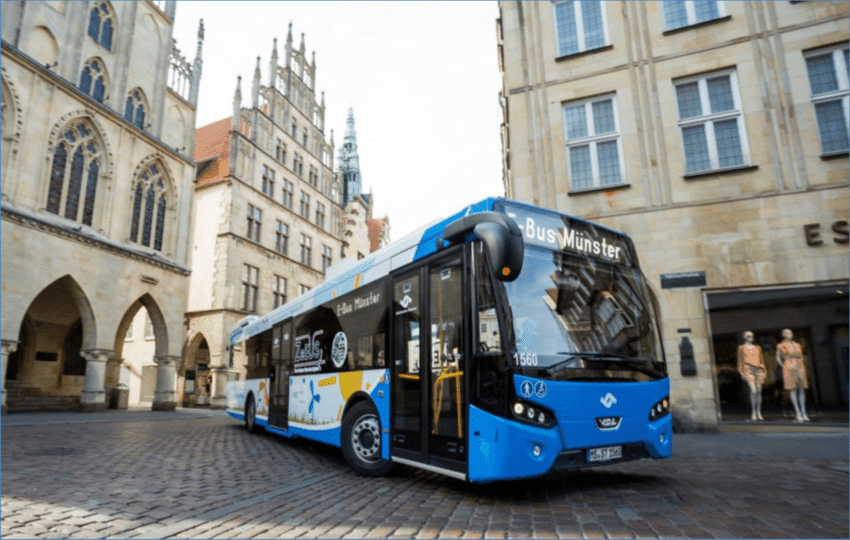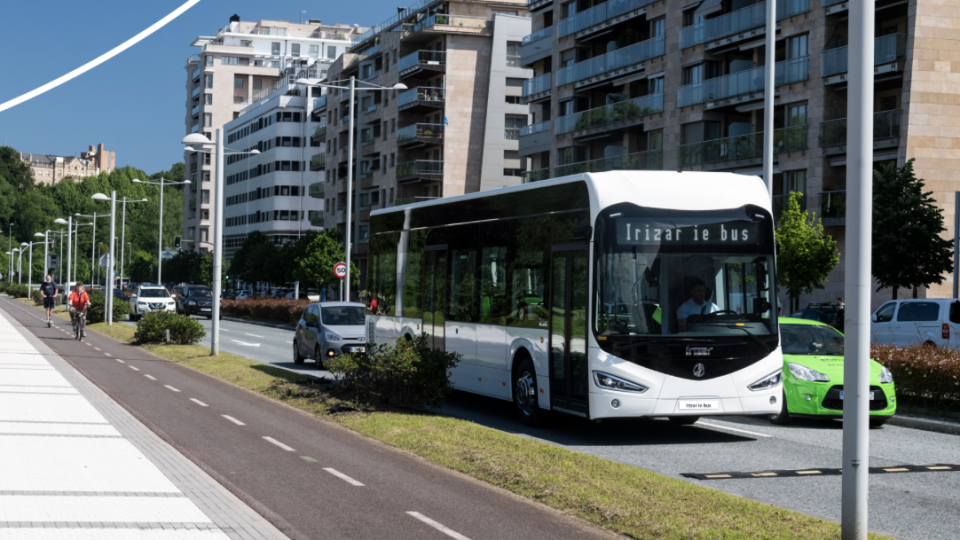VDL celebrates 50 million ‘electric’ km with the launch of a new range of batteries
VDL Bus & Coach is celebrating the milestone of 50 million ‘electric’ kilometres with the launch of a new range of batteries, that can reach a capacity of 525 kWh. The 670 Citea Electric currently on the road in Europe are running for an average of 130,000 km every day. At the same time, the introduction […]

VDL Bus & Coach is celebrating the milestone of 50 million ‘electric’ kilometres with the launch of a new range of batteries, that can reach a capacity of 525 kWh.
The 670 Citea Electric currently on the road in Europe are running for an average of 130,000 km every day. At the same time, the introduction of a new battery pack is increasing the range of operating and system solutions available, VDL points out. The road is paved also for the deployment of VDL e-buses in Southern Europe, the CEO stated.

New batteries for VDL, up to 525 kWh on the 14.5-meter
VDL is ready to add a new battery pack to the existing range. The first orders for the VDL High Energy batteries have already been received. These batteries have a capacity of 315 kWh for the Citea LLE Electric, 350 kWh for the Citea SLF and SLE Electric, 420 kWh for the Citea SLFA Electric (the articulated) and 525 kWh for the Citea XLE Electric (14.5-meter long).
The VDL High Energy batteries can also be charged quickly by means of a pantograph on the roof. “Primarily, of course, it is always possible to charge with the plug,” says Alex de Jong, Business Manager Public Transport. “The Citea Electric product range gives us even more opportunities to provide our customers with tailor-made solutions.”
VDL electric buses towards Souther Europe
“Over the past year, we have further expanded our position in e-mobility and also strengthened it geographically,” says Henk Coppens, CEO of VDL Bus & Coach. “Our next steps in terms of further development are the further optimisation of energy consumption and the application of the next generations of batteries. In addition to the many operations that use fast charging, we also see the market’s need for greater range, especially now that more and more regional operations are also being electrified. We are also very much looking at expanding our sales area to southern Europe.”

Coppens indicates that VDL Bus & Coach is continuing to strive for the role of leader in e-mobility. “The factory we are going to build in Roeselare, Belgium, will make an important contribution to this. It will be our centre for e-mobility. This will enable us to respond even better to the needs and demands of the market. This is important, because the rapidly growing market for zero emission public transport buses will certainly retain enough potential, but competition will also become fiercer.”
The starting point of ‘Aiming for Zero’ applies not only to the vehicles that are produced but also to the new climate-neutral factory in Roeselare. “We continue to believe in one of our most important principles: that the manufacturing industry has a future in Western Europe; Western Europe has no future without manufacturing.”
VDL is European market leader for e-buses
According to recent research by Chatrou CME Solutions (that focuses on European electric bus market and was published on Sustainable Bus on Monday), just over 3,000 electric buses have been registered in Western Europe and Poland in the past eight years. With 670 buses in 10 countries, delivered between 2015 and 2019, VDL Bus & Coach is the market leader in Europe with a share of 22 percent.
Electric Citea buses cover more than 130,000 kilometres every day in many European cities and regions, VDL highlights. The 50 million kilometres travelled electrically have saved 7 million kilograms of CO2 emissions. Transdev and Arriva cover most of the kilometres with the Citea of VDL Bus & Coach.
After the Netherlands, Scandinavia is the most important market for VDL Bus & Coach. New projects in Norway and Denmark and 2 projects in both Sweden and Finland bring the total to 120 electric buses in Scandinavia. “We are also seeing strong growth in Germany,” says De Jong. “Cities such as Osnabrück, Cologne and Münster are once again investing in our buses because we have proven to be a strong partner in recent years. As a result, a city like Kiel has also been convinced and ordered 36 electric Citeas. Our first e-buses are also in operation in Belgium, France and Switzerland.”







